Leica M9 Digital Rangefinder Camera - Page 8 Index of Thorsten Overgaard's user review pages on Leica M9, Leica M9-P, Leica M-E, Leica M9 Monochrom, Leica M10, Leica M10-P, Leica M10-D, Leica M10-R, Leica M10 Monohcrom, Leica M11, Leica M11-D, Leica M 240, Leica M-D 262, Leica M Monochrom 246, Leica SL, Leica SL2, Leica SL2-S, Leica SL3, Leica SL3-S as well as Leica TL2, Leica CL, Leica Q, Leica Q2, Leica Q2 Monochrom, Leica Q3 and Leica Q3 43:
Ten days in the Caribbian with the Leica M9
By: Thorsten Overgaard
Many have asked what this page 8 would be about, hoping it would be revealing a new secret lens (as the 35/1.4 or perhaps a Leica M10). This page was unavailable from December 2009 till March 2011. Thing is, really, I just never got to finish it when I came back, but had dedicated page 8 to this article while I continued with the following pages. So there you have it, as simple as that.
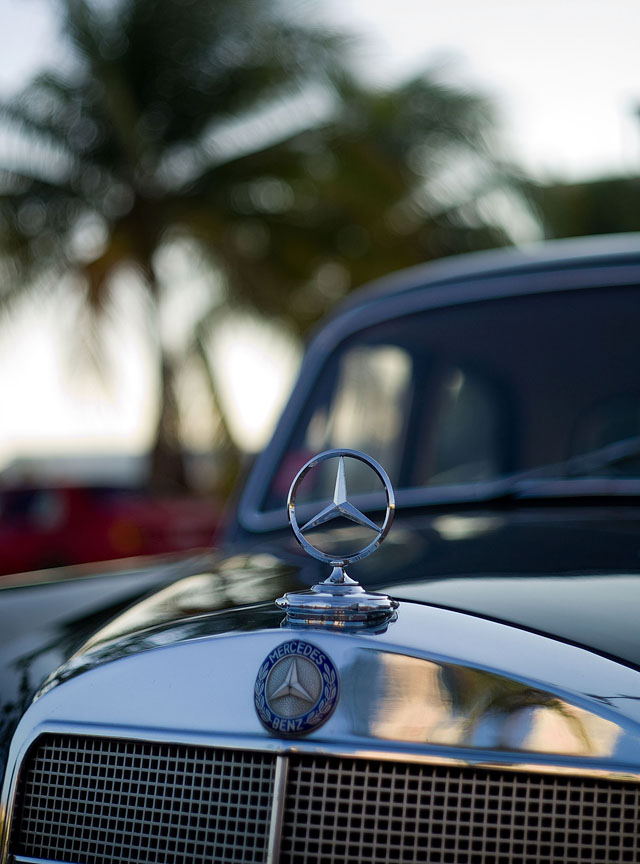
A classic Mercedes on the harbor at Aruba. Leica M9 with 50mm Summicron-M f/2.0.
Christmas is supposed to be about peace on Earth and goodwill, which is why almost each year I try to make an escape away from the commercial Armageddon December has developed into. In December 2009 I had myself strategically invited to celebrate Christmas on a cruise ship in the Caribbean to deliver photo seminars and photograph the atmosphere on the ship and the Dutch Antilles. The marketing department needed a new style to show the islands and the ship during the holiday season.
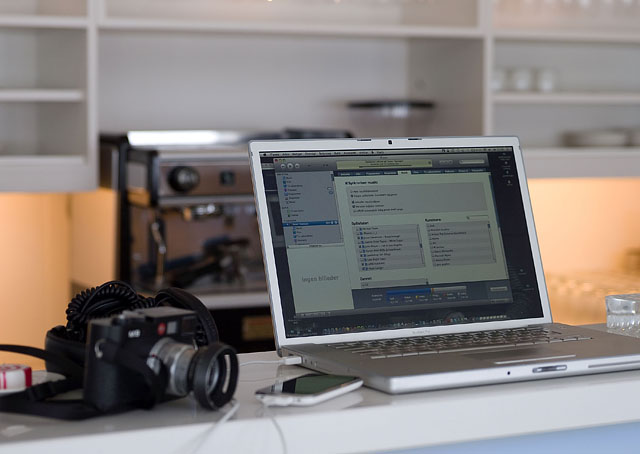
So I set up office with the Leica M9 and a laptop within safe distance to an espresso machine and started photographing the islands, the ship, the guests, the concerts and the events on board. I should mention that I also brought the big roller case with Leica R9 and Leica R lenses from 19mm to 400mm. I will get back to that in a bit.
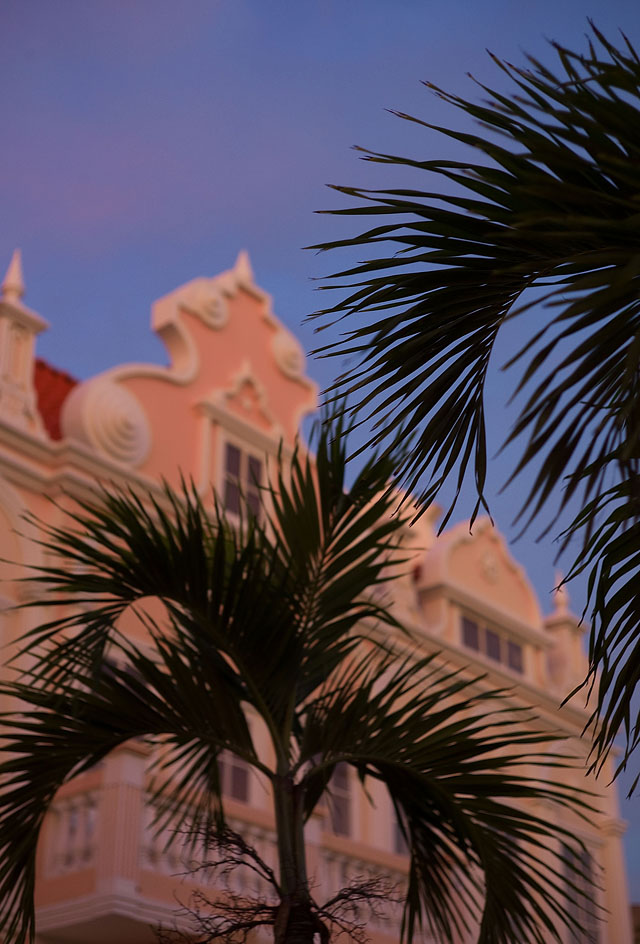
Aruba
I just recently realized the truth in the statement that 70% of our attention is related to our work. I've always disagreed, though I've always been one of those people working all the time. Perhaps because I disagreed that 70% of one's attention was governed by economics. But with the realization came the fact that work is not only about money, it's also about lifestyle and what one want to make out of life and what one want to leave behind (if anything). And whom you want to work with.

I started my first (advertising) company when I was 18 and I've only been employed a total of three and a half yeai in all my life. The rest of the time I've created my own work and my own companies, mostly based on what I had of goals and how I wanted things to run. And when I sold my internet company in 2000 I wasn't allowed to work in that or any related field for five years. Hence I turned to writing and photography; which was personal and basic talents I've always had (which in some weird way is the reason why I never wanted to make them into a living).
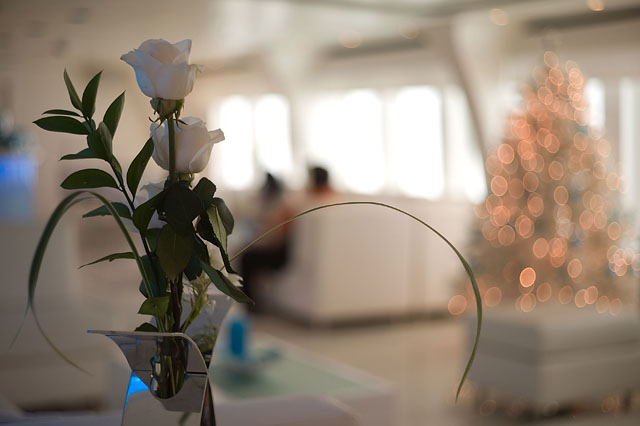
In any case, when realizing that 70% of ones attention is in fact directed towards work, it also made sense why I'm doing what I do now, and why that works for me: I've always followed my own goals, which in periods have been to make loads of money (which I eventually succeeded with in the internet business, at least on paper). Goals can be many things, it can be made in protest against something, trying to be like someone else, or it can be a more sound and sane goal out of sheer positive interest.
Photography and writing are not new inventions, so when I aimed into that field it was because I had an idea how I wanted to do it.
I believe in storytelling and aesthetics. Hence I find it to make even more sense now than ever before that I wouldn't photograph if I couldn't use equipment I believe in and love. It may sound a bit lofty to say that I would skip photography if all there was available was Canon equipment. But I would, because my first priority isn't to make a living but to make pictures. The money follows automatically. Or they don't.
I'm a photographer, but cameras don't interest me. I get interested in a camera if I can feel that it will bring me closer to my photographic goals, but I've never studied cameras, or bought them, for fascination of the cameras them self. And as you may have noticed, I don't review equipment, I only write about my own cameras.
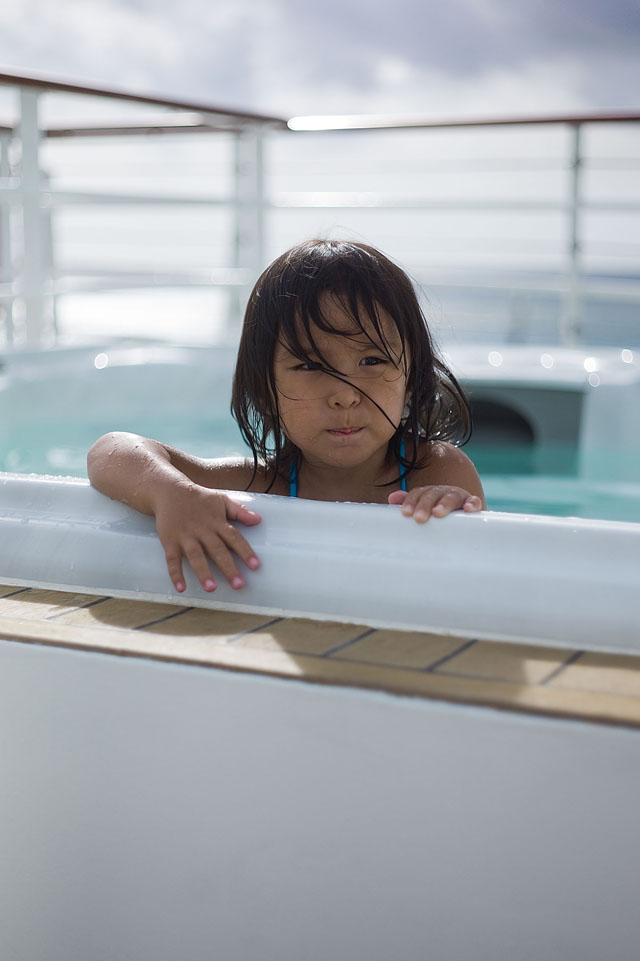
This could turn into a long philosophical piece, but it won't. But I've done a number of strategic seminars with top managements and company founders in the past, and they are ALL of them, and ALWAYS, governed by a goal to help someone get better shoes, travel easier, experience something. The successful and happy managers and workers are the ones doing it to help others, never just to make a living.
But one can forget this in trying to calculate fees, overhead and all, and in trying to optimize one's earnings. Economy is part of it, but the main interest should never be the money but the actual goal. What is your passion, and how can you come to do it the best and most. And then keep your expenses low so you can follow your goals, even when they're not as profitable.
I guess this was my "peace on Earth and goodwill to all" inspiration speech. So let's get going with the story about the M9 in the Caribbean.
Living by making art
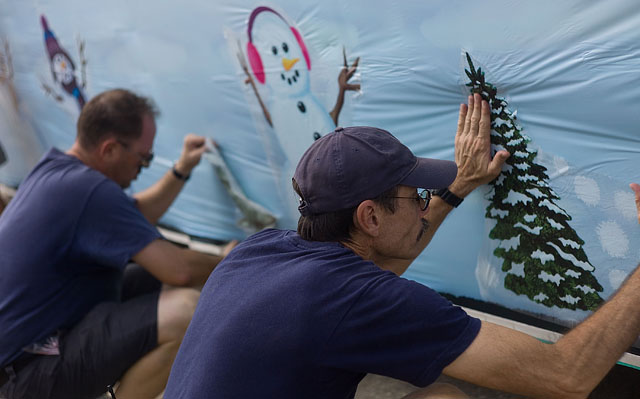
On December 20, 2009 early in the hot morning some people started preparing a wagon for a Christmas concert tour throughout the island of Bonaire, also known as the worlds number one diving paradise for it's clear water, populated by just 14,000 souls.
Playing Christmas songs in 30° Celsius somehow isn't as believable as when done in London in freezing cold. Nevertheless, it was a Christmas experience, and done in the spirit of Christmas, "peace on Earth and goodwill to all".
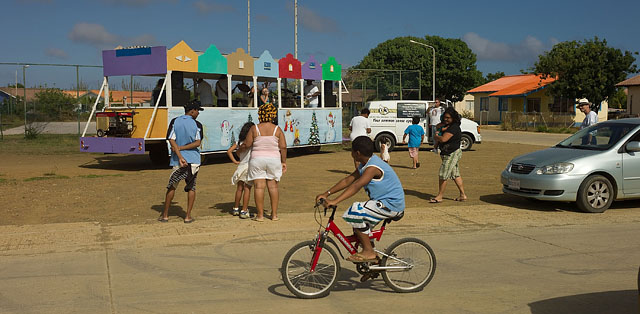
Locals of Bonaire enjoying the Christmas band from bicycles, cars and dancing shoes.

Some even dancing ...
Now, the intersting part here is that the wagon would visit nine different locations, and each time perform the same set list the band had agreed on at the first location. And while driving from place to place, the band would put instruments aside and talk about life and stuff.
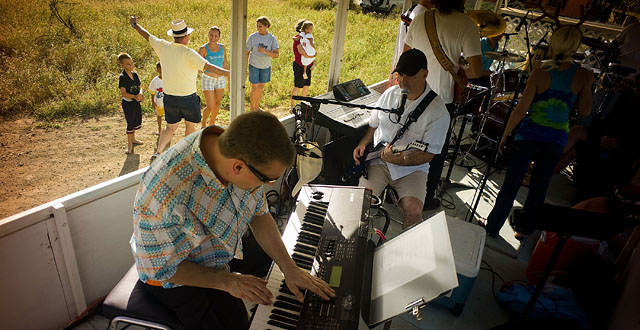
Leica M9 with the 21mm Super-Angulon-M f/3.4
I thought we would be playing all day, all the way, singing and having fun, but we didn't. And why should we, because there was no audience but our self between the venues. So the band played and entertained for the audiences, and then between the gigs, they had fun by talking to each other.
We easily get this idea that because Ray Charles could sing and play, he loved to do that all time and never did anything else. But the actual reality is that it's a job, and when an artist is off, he has to deal with buying food, look for lost mobile phones, answer letters from the tax office and try to make something decent out of teenage kids.
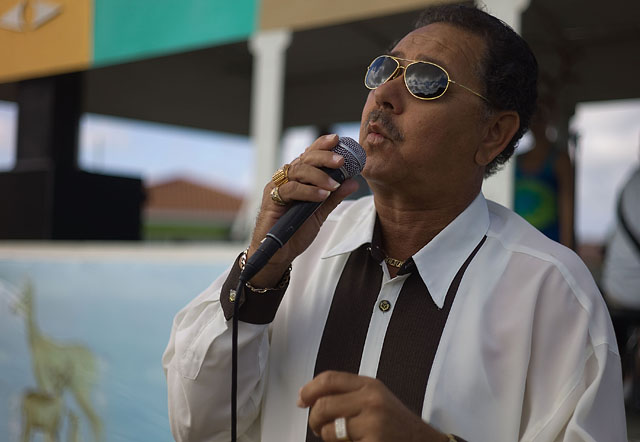
A local crooner as guest singer
It just so happens that as an artist, when you work, you blow others mind. As a plumber you may make one family happy with the work you perform in one day. As an artist you may make a whole audience happy with the work you perform in a few hours, or a whole generation with a record you make. When Paul McCartney was at the rehearsals of the Beatles musical recently, he commented that it was a funny feeling seeing a song he had been writing on the back of an envelope in a tour bus, made into this grand musical. For him it was still just an envelope with some words.
It's just a different business dealing with art and aesthetics and the skills you deploy in that area.
 Local percussionist of Bonaire, Gabriel Mercera. Leica M9 with the 50mm Summicron-M f/2.0 (II) Local percussionist of Bonaire, Gabriel Mercera. Leica M9 with the 50mm Summicron-M f/2.0 (II)
Now, Ole Boskov (the piano player) and I had a few talks about art and stuff on this Christmas concert tour. He usually works in Denmark where he plays Hammond organ and keyboards in the band Backseat most weekends, and also compose his own music that he send out on CDs.
We both meet a great deal of people who dream about making it as an artist, and more than often the general consensus seem to be that you have to be discovered: That you write and play music, take photos or write novels in the expectations that some day you will be good enough to be discovered. And then you have made it, same way as Michael Jackson, J.K. Rowling and Henri Cartier Bresson.
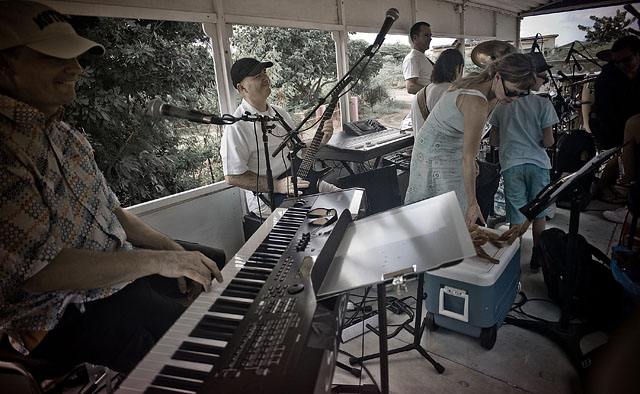
Leica M9 with the 21mm Super-Angulon-M f/3.4, edited in Lightroom using a preset from Maurizio Beucci. I use his preset some times when I'm in real trouble with colors and light.
Art is a tricky area in that it seem to deal with talents and emotions that are more personal to us than performing some plumbing work or repairing a car. So we tend to hide the artistic work till it "is good enough".
The almost hilarious reality of course is, that as long af you hide your art, it will be very difficult for anyone to discover it. But reality probably also is that it would be more painful to be ridiculed for writing poetry than never being discovered and recognized as a poet. Isn't it? So we hide it till we are sure it is "good enough".
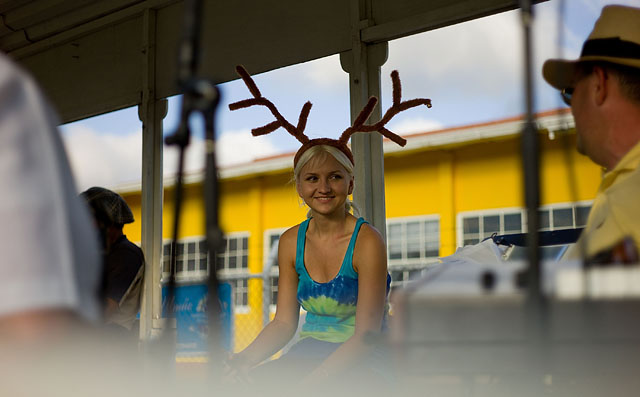
Russian singer Alyona Yarushina. Leica M9 with 50mm Summicron-M f/2.0 (II)
So the big question that remains is, when is it "good enough?" and the answer to that is that it always was. You start at some point, young or old, and whatever you do, somebody will like it. Perhaps to begin with your mom and a good friend, but as you continue to produce you get a wider audience, and you get better at expressing your self, and you learn more about what you want to do - you get your voice
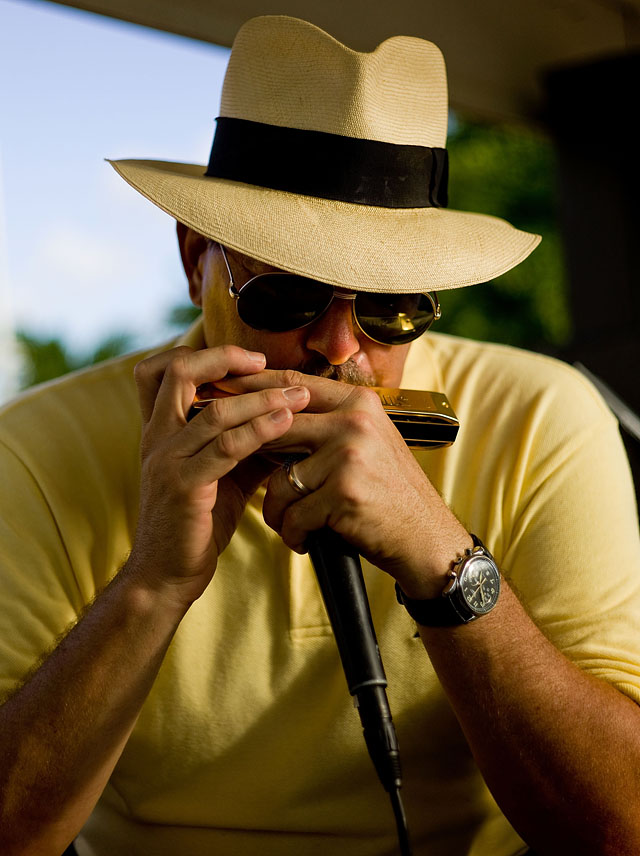
Leica M9 with the 50mm Summicron-M f/2.0 (II)
No starting point of being an artist
There is no certain day, after much training, that you can call your self an artist. You were more likely born one but perhaps happened to work in accounting or selling houses by accident. But then one day you picked up a camera and though "wow, this is something I can do." And after a while you started wondering how you could actually make a living of it, or at least become recognized.
In any case, in art there is no right or wrong. There is no official way to get approval for being good enough. The best advice I can give is do it the way you think it should be done, and eventually you will find an audience of a handful or several thousands who think it's great. And if you really have a distinct voice, you will get haters as well who'll accuse you of being out of focus, don't know a thing about Photoshop, or not being a real photographer. Think of Picasso and you have a good idea of how right you can be as an artist, he never did it the right way anyways. So why look for one? - just do as you think it should be done.
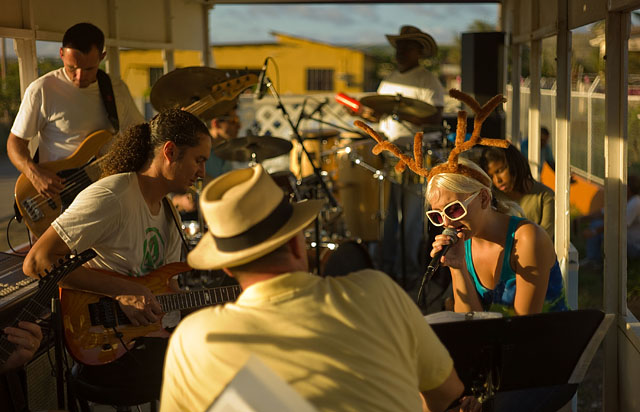
Just think of this redicilous standard of not cropping photos; that when you frame a photo, it has to stay that way, and preferable still with a dark edge from the film frame. I mean, that is something from last century and may be a fun rule amongst some photographers, applicable in art prints. But in magazine usage, photos get cropped left, right and center to fulfill their role as a communication. Of course there are things to do and not do in different areas. In advertising photography sharpness is often mandatory, whereas in other areas of photography you can get away with a great moment or atmosphere being out of focus. Rules exist to be broken, for some they exist to make others wrong.
Imagine you shoot to make an exhibition in the near future. Some hundred people may visit, and some will shake their head, some don't get it, but a very few actually want to buy a print to frame for their wall. That is all you ask. Don't ask for approval from everybody, and don't wait for someone to discover you and ask you "where have you been all those years?" because it's unlikely to happen. Do something you are proud of, and keep improving the things you value (be it sharpness, color accuracy, timing, composition, tonality, adventure, print quality, speed of operation or other).
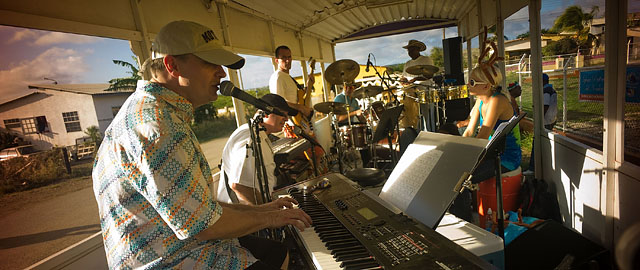
Leica M9 with the 21mm Super-Angulon-M f/3.4
But more importantly, get on with it. And by that I mean do photograph, and do show your photos, and do take assignments never mind how small or how unpaid. Grow from there, become wiser, select the things you want to do and say no to the ones you don't. And one day you will notice you have made it, but that you really can't put your finger on where or when it started.
Many artists live happily (or unhappily) making a big or small living from utilizing their talents. In daily life the main difference is probably the freedom to choose if you compare it to selling cars or perform plumbing. And of course that you address the aesthetics why you get so much more emotional response.

Second-last venue on the 10-hour concert tour at Bonaire. Leica M9 with the 21mm Super-Angulon-M f/3.4
It's a false standard of the past - back when mass media ruled the world - that either you have made it or not. Some years ago you would in fact be discovered by some record mogul, and before you knew of it, you were a household name world wide. Today you can compose a piece of music and launch it via your own record label, website or iTunes. It's a different world, and perhaps you don't have to make a living of it. Perhaps you do some plumbing, compose some music and write movie scripts. It's ok to multitask, either forever, or while you push your compositions to the top.
Express uniqueness
It's not that right or wrong doesn't exist. There certainly exist right and wrong in driving on the highway and in many other relations. But in art there isn't any. Each of us are unique and posess an unique viewpoint, and if you can express that uniqueness, you have made it. As far as I'm concerned, why do it if you are driving in the same direction as everybody else?
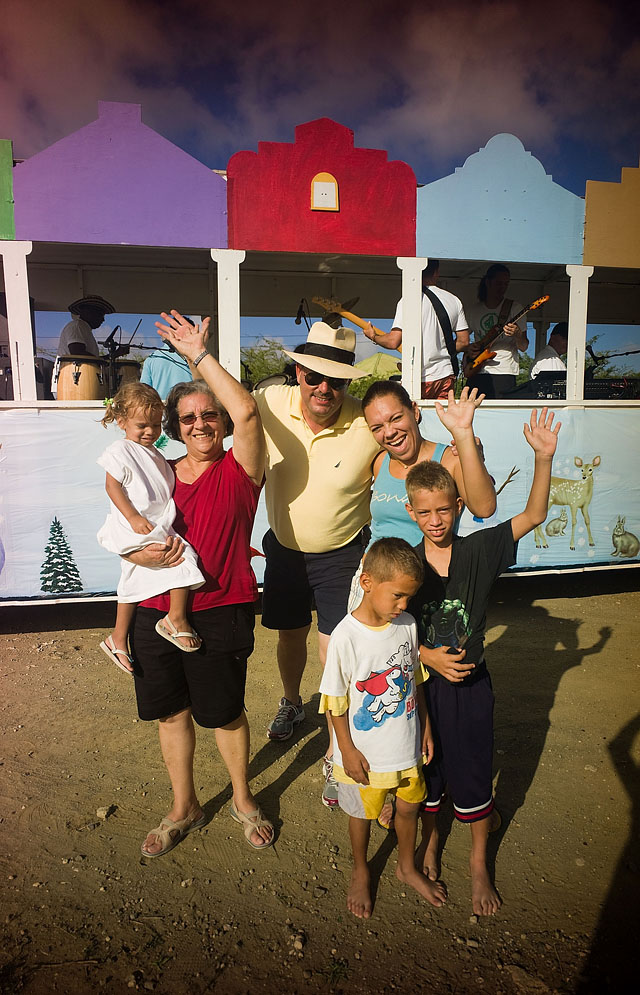
Leica M9 with the 21mm Super-Angulon-M f/3.4. As you can see the Super-Angulon has some real funky colors in the edge. Special effect or error, I don't know. I only know I have something nobody else have.

Leica M9 versus dSLR
In some way December 2009 was the beginning of the end for the Leica R9/DMR system. Having used the Leica M9 for a few months since September 9, I learned that I could use the Leica M9 for more and more of the things that I used to rely on the dSLR for.
Traveling with a dSLR system and lenses from 19mm to 400mm and in a roller case may be necessary, but I already had started thinking, "what if I could travel with just the Leica M9". But I really couldn't see how it would be possible, because whenever I brought the R9/DMR kit, I always needed it just a little bit though I preferred to use the Leica M9.
When an American actor on the cruise ship needed a front page photo made here and now, we set up a photo session on the deck. It was a quite funny story, because the magazine had called his agent that he was nominated as the most sexy Latin actor in 2009 why they needed a great shot. They had imagined, now that he was anyways in the Caribbean, that we could rent a yacht and do a photoshoot with some nice looking girls. All in all a great idea, except that they didn't supply a budget.
So instead I suggested the actor, Gonzalo Vivanco, that he should go fetch one of his Cuban cigars and meet me on the deck. And then we did a photo shoot of him cleaning the deck of a cruise ship as exchange for lending it for a photo shoot - because the magazine didn't have any budget for a yacht.
When I shoot assignments that are a one-time chance, I usually shoot with two cameras to have two different memory cards and at least one operating system if the other fails. But mostly I shoot with two different camera models. It doesn't make sense to use two of the same camera I think, mostly I have two different cameras because I need the versatility of them. For example the Leica Digilux 2 is very good for slow shutter speeds (because there are no moving parts in it) and for architecture and interior (because of the 28mm wide angle), and the Leica M9 hangs easily as an extra camera over the shoulder whenever I use the Leica R9/DMR system. You have to change mind-set from one camera to another, but that too can be an advantage.
Now, the Leica R9/DMR has the advantage - like the Leica S2 - that it is a system you can rely on for perfection. If you do things a certain way, you will get a certain result, which is often exactly what you want when you shoot something important. You tend to shoot very straight, often using a monopod (or tripod) and having measured out everything from light to distance. So for this assignment I relied on the R9/DMR to get me the results, and it did.
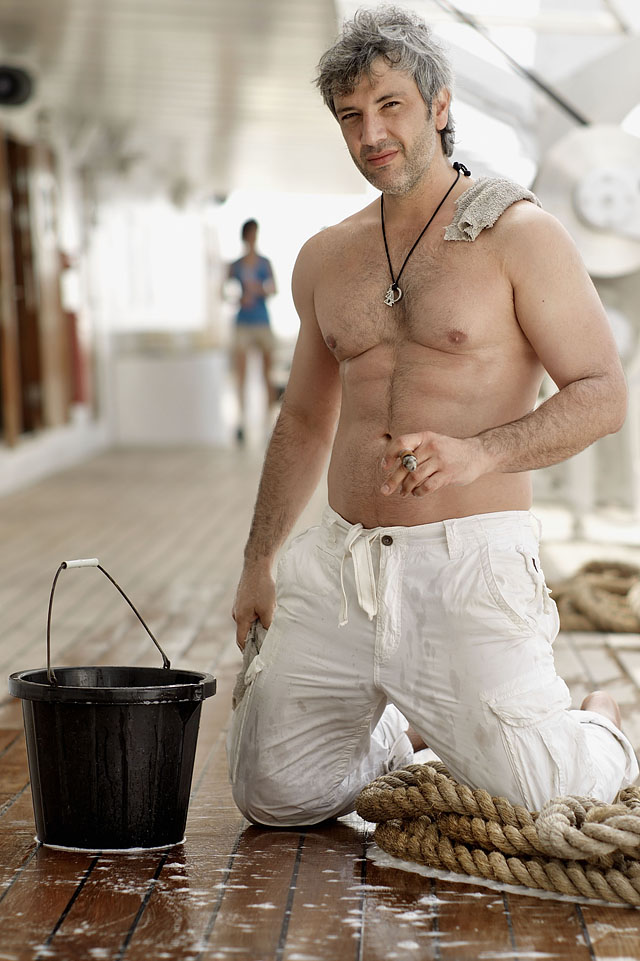
This one shot with the Leica R9 dSLR with DMR digital back and a 80mm Summilux-R f/1.4 lens.
I shot somewhat 200 images and delivered 12 final images to the magazine: 10 from the R9/DMR and 2 from the Leica M9. And they used one of the photos from the Leica M9. The other one that they didn't use from the Leica M9 was the actors own favorite. Not as a shot for this front page (because he looked a bit unfit; but he liked the expression a lot).
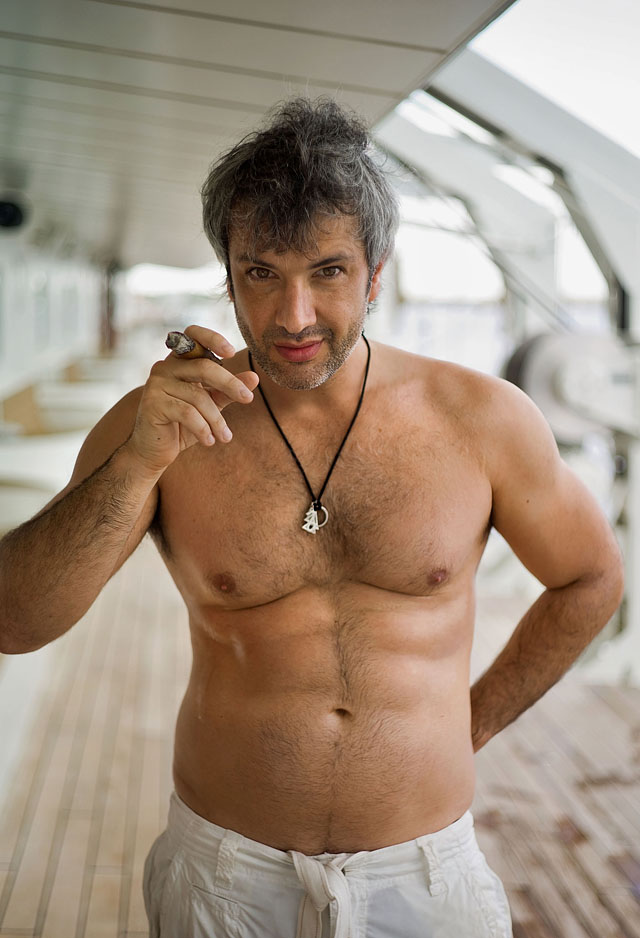
Photographed with Leica M9 and Leica 50mm Summicron-M f/2.0
This, as you can imagine, made me think. I already have had different observations and considerations as to how people will react to the Leica M9 versus a Leica R9, but this gave me reason to wonder why the style of the Leica M9 was different. After all, it's the same philosophy of simplicity and great glasses in both cameras.
And the only explanation I could come up with is that you simply shooter more casual with the Leica M9. I already know that whenever I stumble into situations I'm unprepared for or where I'm challenged, or where I'm simply under-dressed in term of equipment (having only a 90mm where the assignment calls for a 400mm), it will usually turn out an interesting result.
And where you shoot almost mathematical and with scientific certainty with the Leica R9/DMR (and Leica S2), you move around and play more with the Leica M9. And because of the viewfinder where you really can't see the final result (everything is sharp and clear, and you can even see what's outside the photos frame lines), you may be surprised what you actually get. And perhaps the person in front of the camera actually act in a different way. I really never have figured out if they think of the camera as a joke, or if they take it just as serious as - but more charming than - the bigger dSLR.
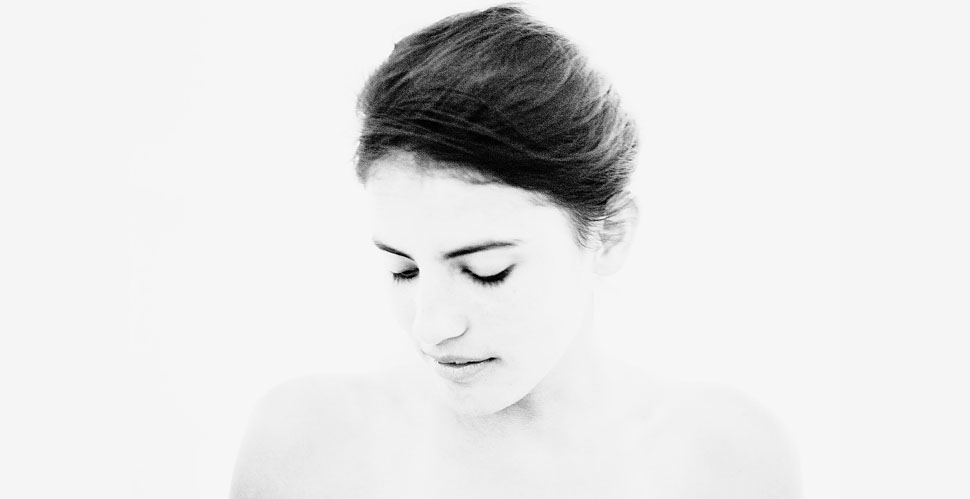
American artist and model Melany Bennett. Leica M9 with 50mm Summicron-M f/2.0
I'm sailing
I did quite a lot of photographing during Christmas and New Year, on the islands and on the ship. Concerts, Christmas evening, family events and more. But let's wrap it up with just a selection of photos.
With a good handful of artists on board we couldn't help playing around with cameras and instruments on the ship. American actor and musician Gavin Bellour was one of them, and amongst ohter things, we did this staged restaurant scene one evening.
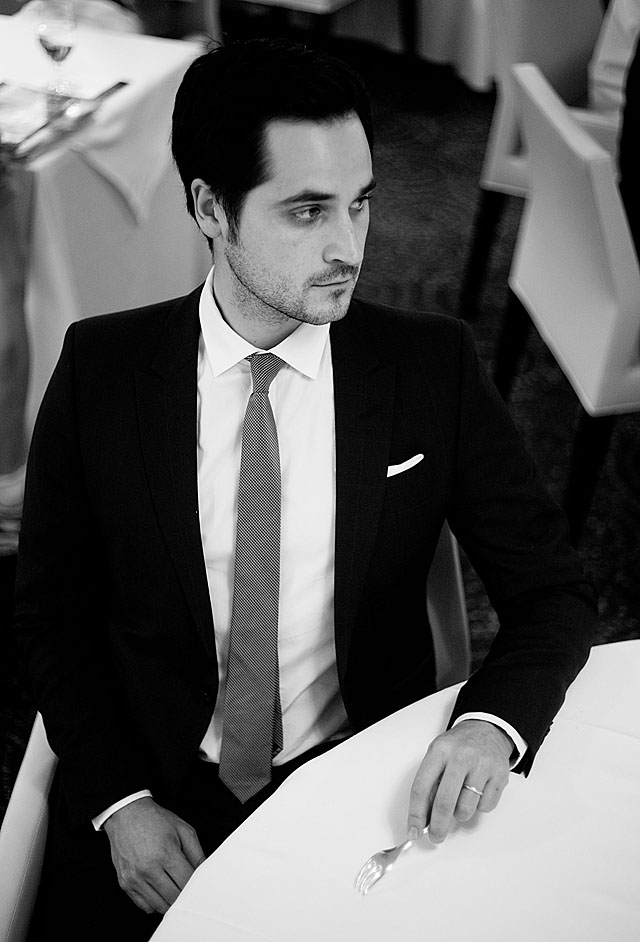
American actor and musician Gavin Bellour in a staged photo shoot in the restaurant. Leica M9 with 50mm Summicron-M f/2.0 (II)
I also worked with American artist and model Melany Bennett. She's only 16 but have already done work for Levis and other clients. This one is - believe it or not - her dancing on a sofa table in the bar while I'm lying on the floor with the Leica M9 and a 50mm:

American artist and model Melany Bennett. Leica M9 with 50mm Summicron-M f/2.0
| |
|
|
|
|
| |
Buy the new eBook
"A Little Book on Photography"
by Thorsten von Overgaard |
|
| |
|
|
|
|
| |

Order now - Instant delivery.
More info
★
★
★
★
★
★ |
|
It's a humorous understatement to call this
new eBook by Thorsten Overgaard for
"A Little Book on Photography".
It's a grand book, a history lesson, life experience, a biography and poetry book and brilliant photo book!
All in one beautiful package of 180 pages
to fire you up and get you to love
photography ... unconditionally!
"A Little Book on Photography"
eBook for computer, Kindle and iPad.
New release March 2017.
Intro price only $47 - 180 pages.
| |
|
|
| |
Buy Now

Instant Delivery |
|
| |
|
|

|
|
| |
|
|
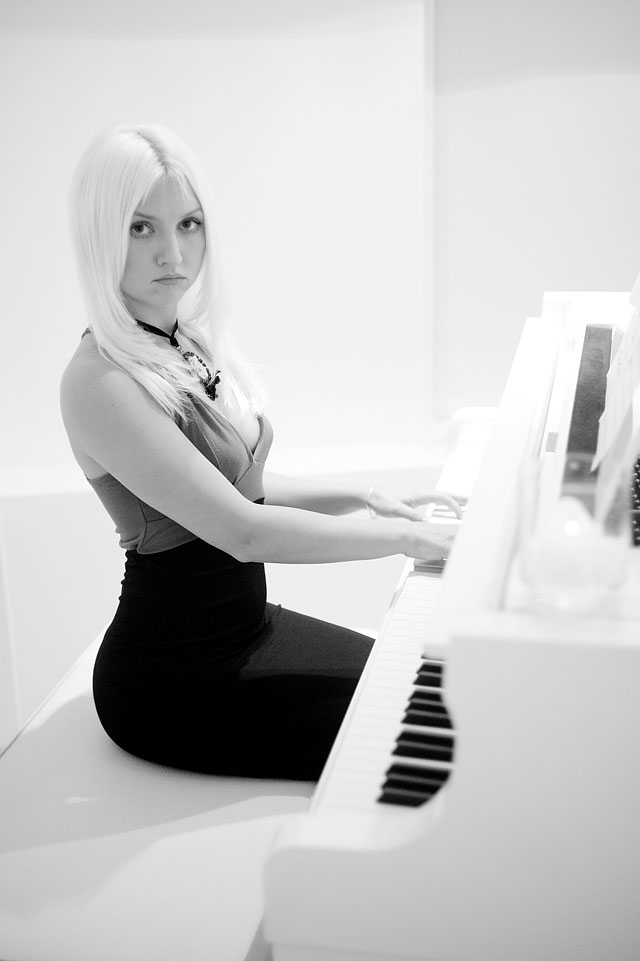
Russian singer Alyona Yarushina by the piano. I like how her dress aligns with the black keys of the piano, but we did a lot of photos around the ship.
The ships cabaret featured a number of international artists where I used both the R9/DMR (that I mostly use for concert photography) and the Leica M9. Here is one with the Leica M9:
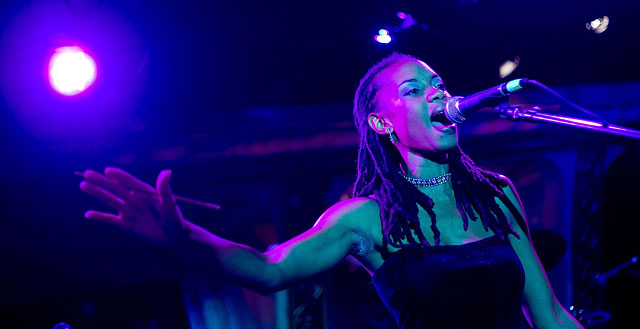
Hollywood singer Michele Henderson
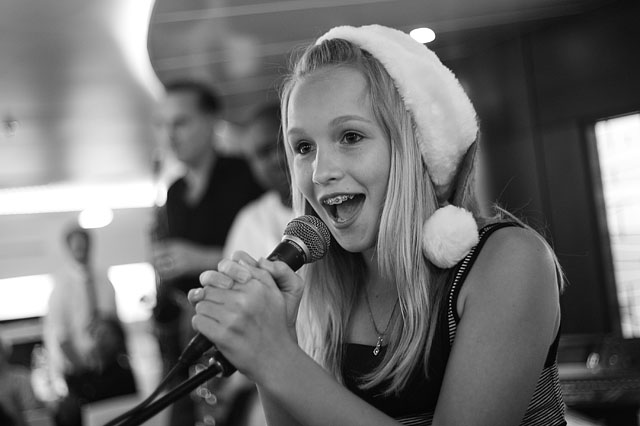
A young passenger gets to sing with the band on Christmas evening. Leica M9 with 50mm Summicron-M f/2.0 (II)

The piano players son, Philip Boskov with American Hannah
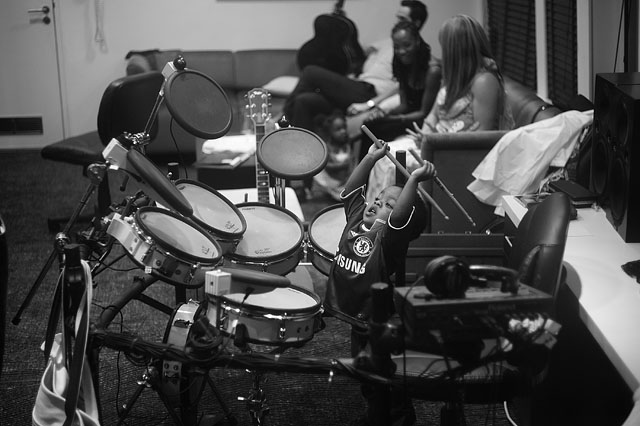
Backstage in the bands rehearsal area where the son of one of the singers is about to start his own little drum solo. Leica M9 with 50mm Summicron-M f/2.0 (II).
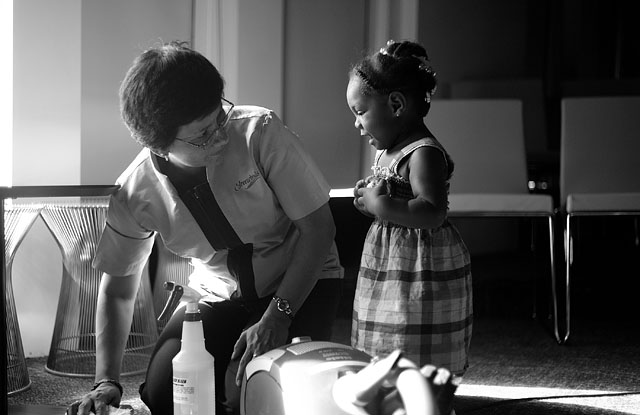
A passenger have a question for the cleaning lady. I kind of like the expression and light in this one. Leica M9 with Leica 50mm Summicron-M f/2.0
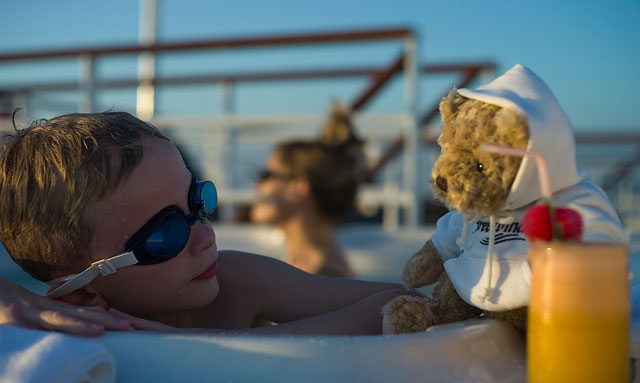
I also had unlimited access to the ships bridge for internal and promotional photos, but most of those with the R9/DMR and 80mm Summilux-R f/1.4. Here is one from a late night shift shot with the Leica M9 and 50mm Summicron-M f/2.0:
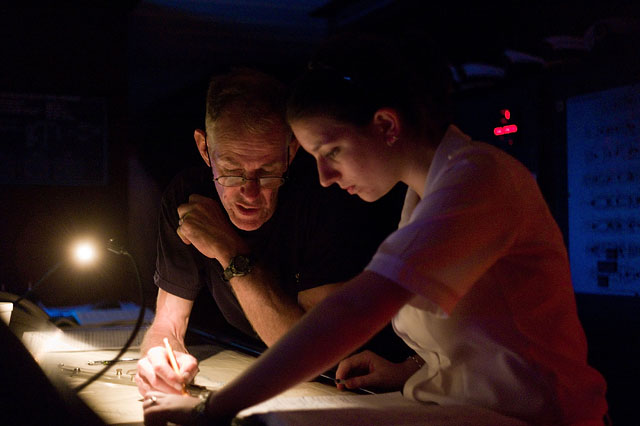
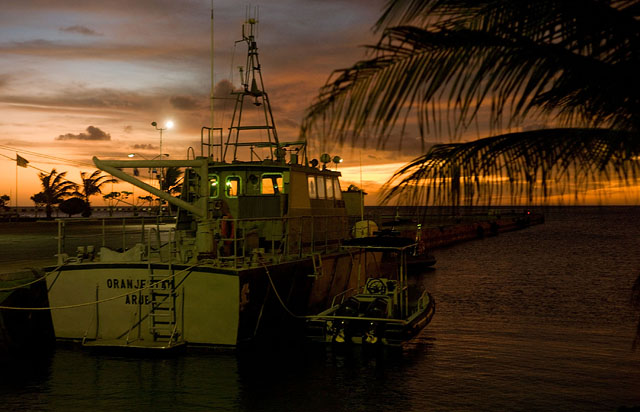
| |
|
|
|
|
| |
Buy my "New Inspiration Extension Course"
|
|
| |
|
|
|
|
| |
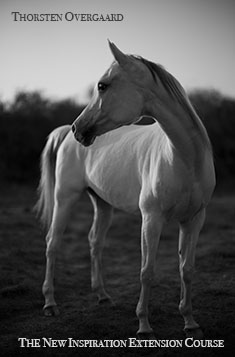
Need more info?
Read this article. |
|
Get inspired and rebooted!
This extension course if made for you! It can be done at home and travel at your own pace. I have taught workshops for years and the Overgaard New Inspiration Extension Course is my experience compressed to a package of training, articles, drills, assignments and video tutorials that will inspire you and take your photography to the next level! For a limited time my course includes something you cannot get anywhere or anytime else:
A portfolio-review by Thorsten Overgaard.
| |
|
|
| |
"The Overgaard
New Inspiration
Extension Course"
For computer and iPad. 181 p eBook. |
|
| |
Only $798 |
|
| |
|
|
| |
 |
|
| |
|
|
| |

|
|
| |
|
|
Order now - Instant delivery. |
|
| |
|
|
|
|
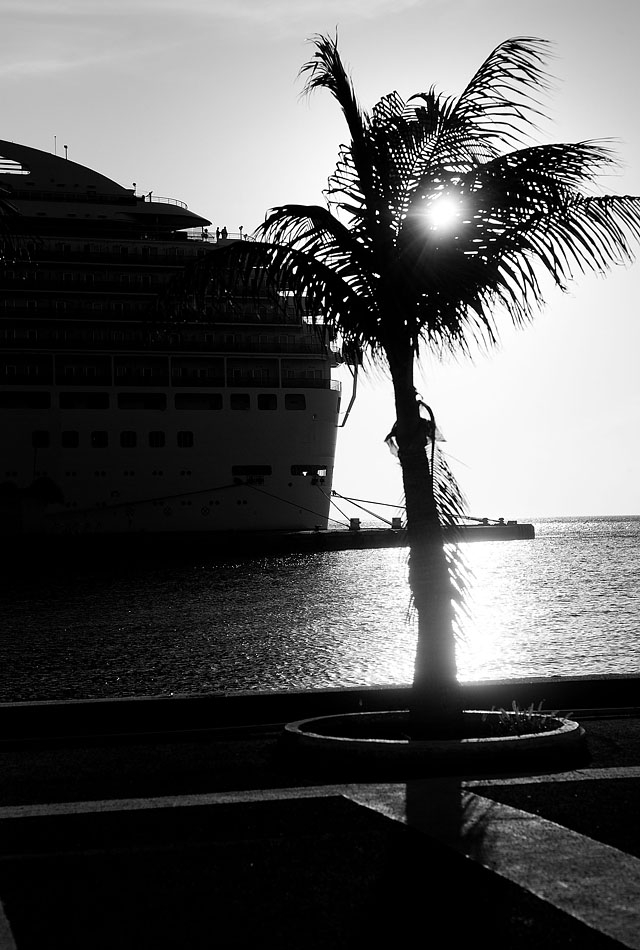
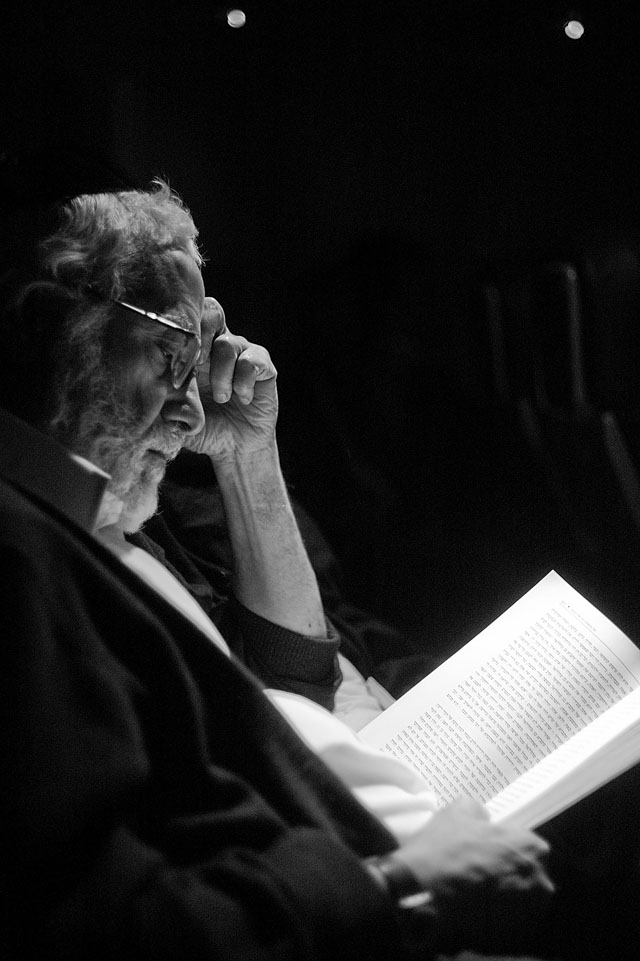
It looks kind of very religious, but it's really 'just' a man reading in the airplane home. Leica M9 with Leica 50mm Summicron-M F/2.0.
Continues on page 9 -->
Index of Thorsten Overgaard's user review pages on Leica M9, Leica M9-P, Leica M-E, Leica M9 Monochrom, Leica M10, Leica M10-P, Leica M10-D, Leica M10-R, Leica M10 Monohcrom, Leica M11, Leica M11-D, Leica M 240, Leica M-D 262, Leica M Monochrom 246, Leica SL, Leica SL2, Leica SL2-S, Leica SL3, Leica SL3-S as well as Leica TL2, Leica CL, Leica Q, Leica Q2, Leica Q2 Monochrom, Leica Q3 and Leica Q3 43:
|
![]()
